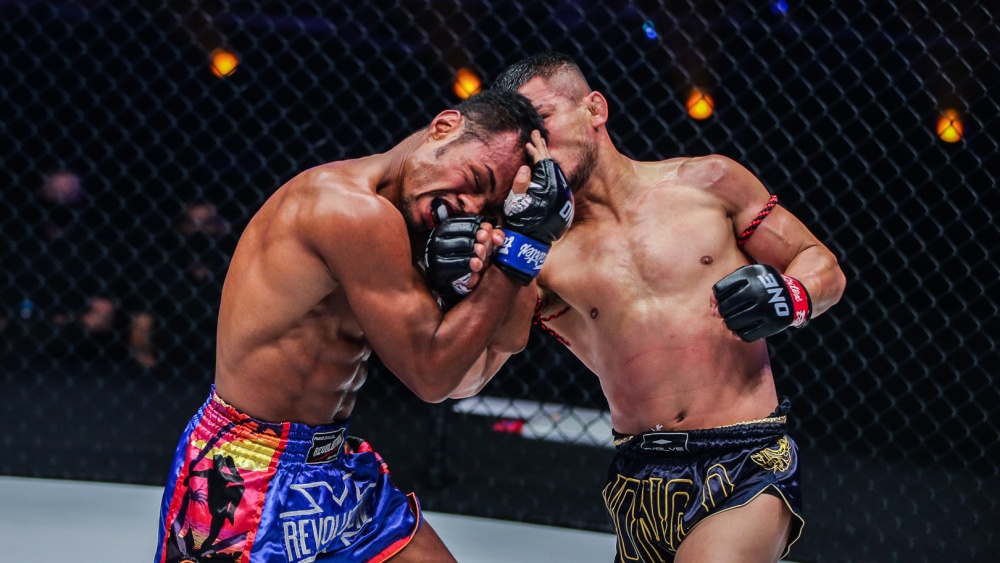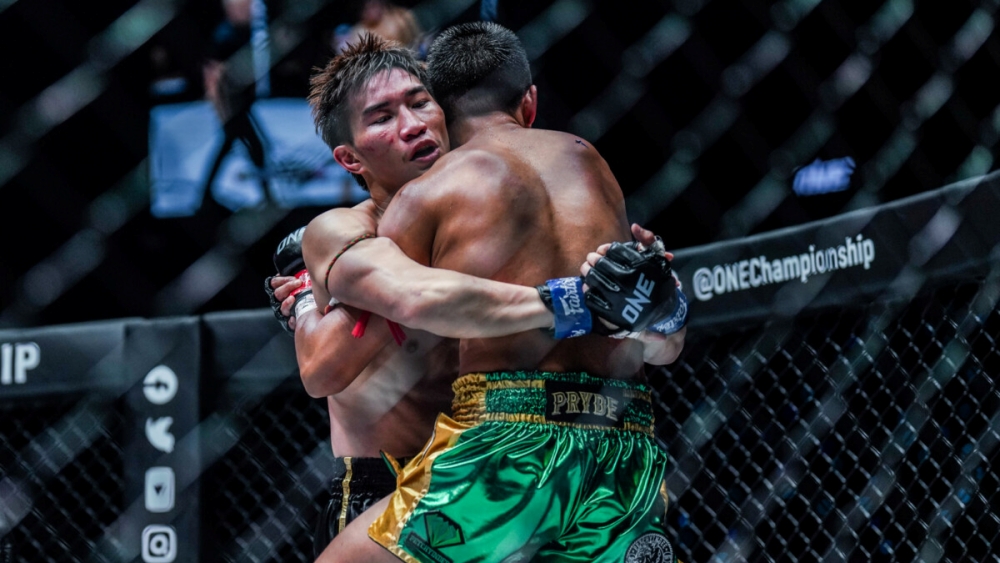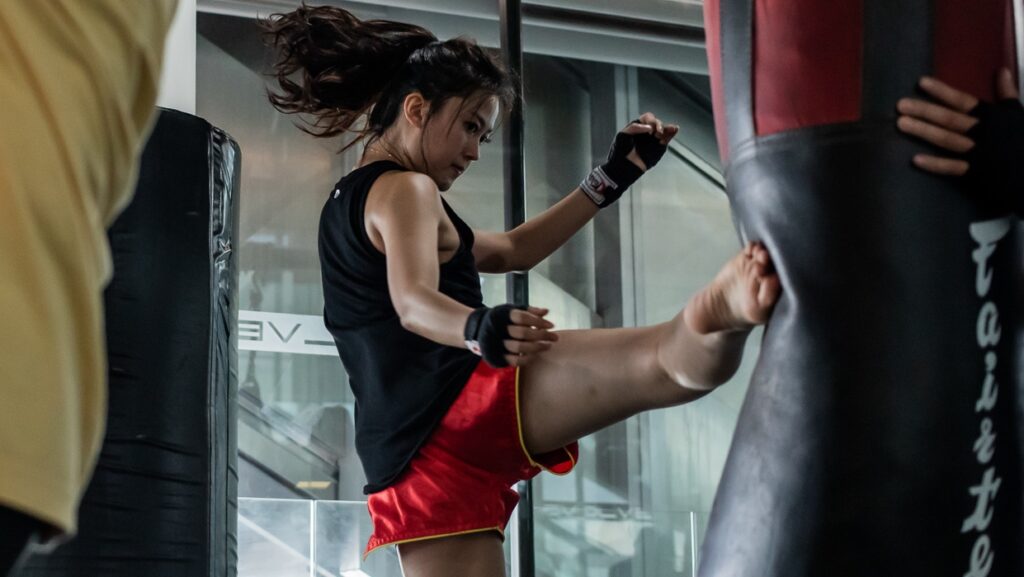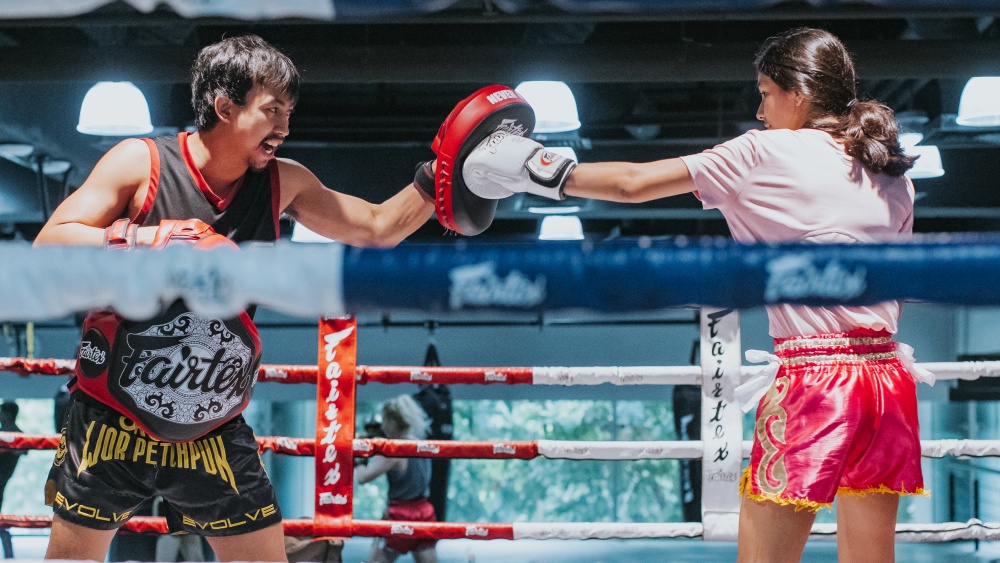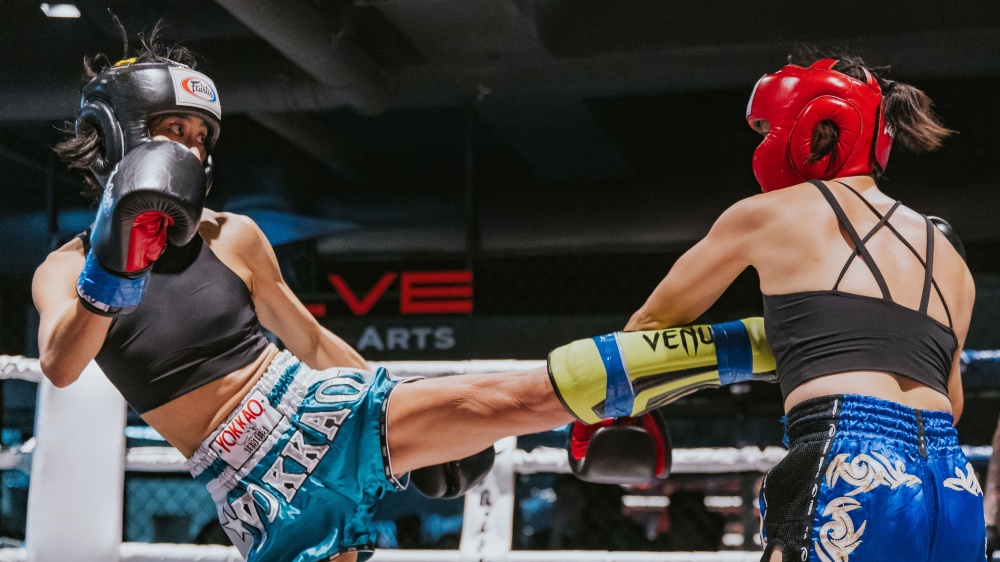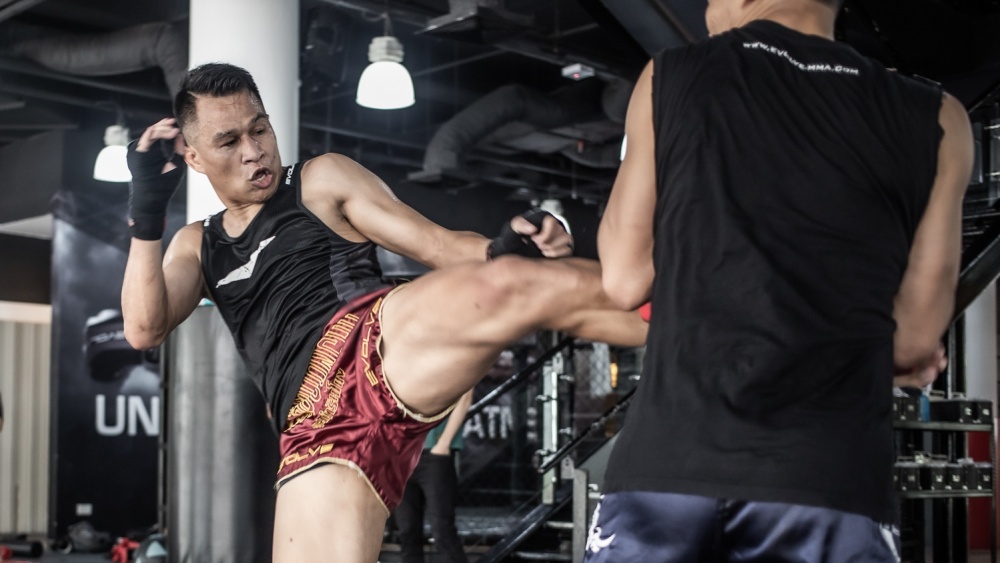The Muay Thai uppercut is a solid, basic strike, easily recognized for its upward motion of application. Every athlete should be well versed in its usage, as it is an excellent strike with a lot of diversity. New Muay Thai athletes learn this strike, at least on a base level, from the very beginning of their Muay Thai journey. It’s considered a solid, fundamental strike that everyone should know, understand, and utilize.
Due to the nature of this punch, the need to be close to your opponent is pivotal. This range requirement makes it sometimes feel like a riskier punch to set up and throw. Comparatively speaking, you need to be a bit closer than a jab or even a cross to use this punch well. Furthermore, utilizing the lead or rear uppercut changes things up a bit, making this a really important strike to understand and have a good grasp on as it becomes an integral part of your Muay Thai game.
Range
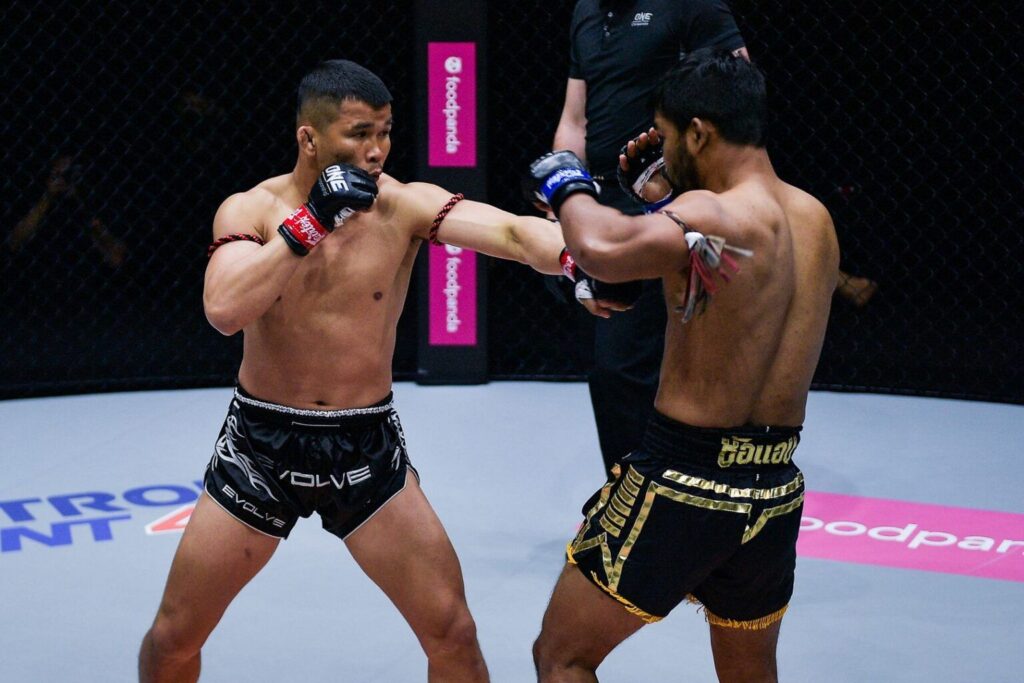
The first step to setting up the Muay Thai uppercut is understanding the range at which this strike can be thrown. Due to its upward nature, the range for this strike generally requires relatively close proximity to your target. It’s important to remember that if you are close enough to strike your opponent, then your opponent is also close enough to strike you as well. Use this knowledge to inform how you protect and defend yourself as you begin setting up this strike on the inside.
How To Get Within Range For The Uppercut
- Utilize the jab and a half step to help you move forward into a closer range more suitable for the uppercut to land.
- A double or triple jab will help you close the distance while occupying your opponent’s hands as you move into range for the uppercut, especially if you are starting at a further distance from your opponent.
- Comparatively, utilizing the lead uppercut will help you to stay on the outside of the range by more than your rear uppercut will allow. If you are nervous about closing the distance, a lead uppercut is a good place to start. As you feel more and more comfortable with closer range strikes, the rear uppercut will be a natural punch to add to your arsenal.
Angles
This will not be the first or the last time you’ll hear that cutting angles is necessary in Muay Thai. Cutting the angle on your opponent gives you the positional advantage over them. Angles not only aid in giving you clear opportunities for offense but in giving you positional dominance for defense as well. Learning to cut angles will aid in the successful offense and landing of your uppercut.
Angle Set-Ups For The Uppercut
- Double or triple jab to cut the corner on your opponent. This angle tends to lend well for a follow-up with a rear uppercut.
- Utilize body hooks to help you find the angle on your opponent. If you can work your way into a left or a right body hook, you’ll tend to have gained a small angle on your partner that will give the perfect set-up for the uppercuts. From here, you can use opposites (left body hook to right uppercut), or even double up with the same side strike (right body hook to right uppercut).
- Hone in on your footwork. A switch step is one example of footwork that will help you find a small angle on your opponent. Use the switch step to throw the jab, then follow up with the uppercut.
Defense
Capitalizing on your partner’s offense to set up your strikes is another great way to find yourself in an ideal position to land uppercuts. When a hand leaves the face to throw a strike, there is most certainly an opening for a return strike.
Learning to defend while landing the uppercut into the open space will give you some quick-landing uppercuts that will put your opponent on their heels as they draw their hands back to protect their face, giving you even more opportunities to land other strikes, as well.
Defensive Set-Ups For The Uppercut
- Utilize the slip off of your opponent’s jab or cross to get your head off-line, and throw the uppercut through the hole and towards their face. You can utilize slips in both directions with uppercuts from both sides. Try slipping the jab and taking a full step to throw the lead uppercut, or slipping the jab to throw the rear uppercut. There are many other variations for setting this up as well. Experiment with footwork as you slip the jab or cross and find the opening for your lead and rear uppercuts.
- Bobbing and weaving under the hooks will accomplish two things. One, it will allow you to take an angle on your opponent (as previously discussed, angles are king in setting up uppercuts), and two, it allows you to throw the uppercut through the hole towards the face.
Even though uppercuts require positioning yourself in a closer range to your partner, they certainly do not need to carry any sort of hesitation or fear with utilizing them. The uppercut is a fundamental strike in Muay Thai that requires plenty of practice, repetition, and exploration to use at its fullest potential.
Finding angles on your opponents, closing the distance and getting your body within close range of your opponent, and capitalizing on the defensive side of your opponent’s strikes are some of the best ways to begin landing uppercuts. Once you master these concepts, you will be able to create all sorts of opportunities for your uppercuts, as well as follow-up strikes of all sorts.
You may also like:
